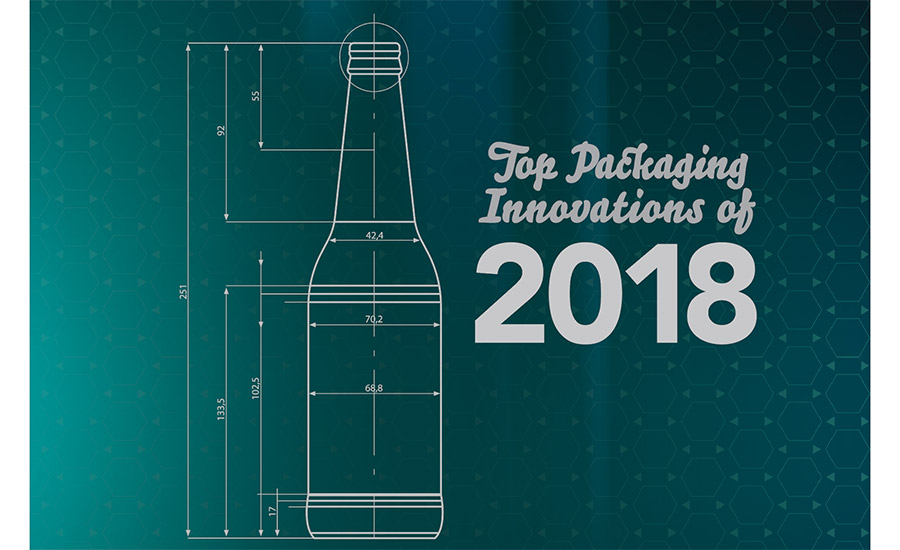With each new year comes reflection of the past year. In 2018, there were many innovations in the packaging space. We have seen growth in areas including omnichannel marketing, smart packaging, premium packaging, sustainable packaging options and digital printing as well as sectors such as cannabis and pet food — and the push by brands, suppliers and packaging companies toward reducing packaging waste.
Some of these innovations piggyback off of 2017, due to even more growth and development in packaging as well as other factors — like how consumers can purchase products and making the packaging part of the overall purchase and unboxing experience.
The Omnichannel Strategy
A proper omnichannel integrates the different methods of shopping available to consumers into one marketing and sales strategy: in a physical retail store, online or by phone. The goal is to enhance the user experience.
Shoppers have an expectation that the product is the product, no matter where they purchase it or see it. This assumption of consistency shows how they personify brands, thinking they are like individual people — not reflecting the fact that a brand is the combined essence and identity of millions of individual products and advertising impressions. Omnichannel synchronicity is of the utmost importance, and it’s a big challenge to manage.
Expectations of packaging mirror this shopper naiveté about brand consistency. Consumers expect the imagery they see online, on in-store packaging and on products that arrive at their doors to all appear exactly the same (or at least very similar). They have no regard for the complexities of manufacturing and fulfillment supply chains.
Danaher’s (danaher.com) “Packaging and the Digital Shopper” survey reveals that 46 percent of respondents believe there’s something wrong with the product if the online image isn’t exactly the same as what is delivered. As well, 37 percent say small variations are all right, but they would prefer the product look as similar as possible as the image online.
E-commerce sales is forecast to reach 4 trillion globally by 2020, says eMarketer, while more brands join in. Procter and Gamble has announced it is testing various e-commerce options, including product customization, in North America. Multi-channel sales strategy will be seen across all sectors in the near future.
Differentiate with Premium Packaging
No matter what you call it — premium, high-end or luxury — many brands have come to realize the need to outdo their competitors with premium applications and designs. It isn’t new, but it is used throughout more sectors now. What used to be mostly seen in the cosmetics and beauty industry and top-shelf liquor is now seen in household, cereal and even bottled water.
One private-label food brand took premium cues right from the fashion industry. The Harvey Nichols food collection (harveynichols.com/brand/harvey-nichols/food-and-wine/food/) has individual ranges of tea, biscuits and more in shiny and patterned tubes and boxes in copper, black and white geographic shapes, gold and silver. Topping it off is its use of luxury materials. The design was created by Smith&+Village (smithandvillage.com).
Named a Paperboard Packaging Competition winner for Carton of the Year, Kellogg’s new EXTRA Creations cereal comes in a folded carton, unlike anything else in the cereal aisle. The gable-top carton is smaller than a traditional box of cereal too. The design was created by Graphic Packaging International (graphicpkg.com).
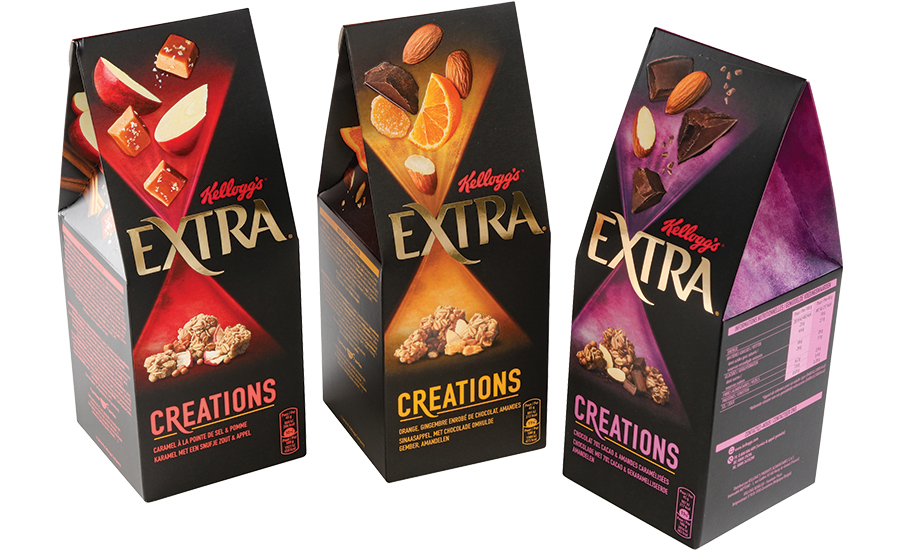
When considering e-commerce packaging design, Luci Lander with Heritage Paper (heritagepaper.net) says one way to build brand loyalty is with premium packaging. “First, keep in mind that premium packaging does not need to sacrifice structural integrity, sustainability goals or your cost-benefit analysis.”
The right premium packaging can differentiate your brand from the competition because it’s more likely to be shared on social media by loyal consumers. In fact, McKinsey & Company (mckinsey.com) revealed that 39 percent of consumers took the time to share a product image or video online of their unboxing. In addition, 61 percent of shoppers were influenced to buy a product after looking up such images and videos on social media.
Reveal a Story with Augmented Reality
Augmented reality offers untapped potential for brands and retailers to connect and engage with consumers as well as revolutionize their packaging. Using AR as a tool for storytelling in word, song and video is becoming more of a thing.
What is augmented reality? It is the use of digital content with your real world view; whereas virtual reality only uses the virtual world, shutting out the real world.
Be it a chocolate bar, pet food container or yogurt, the packaging of these products can be enriched with digital information experienced by consumers via smartphone. This feature also allows brands to learn a lot about consumer shopping habits. With that in mind, Constantia (cflex.com) and technology partner Wikitude, a world leading independent AR technology provider, have developed Constantia Interactive.
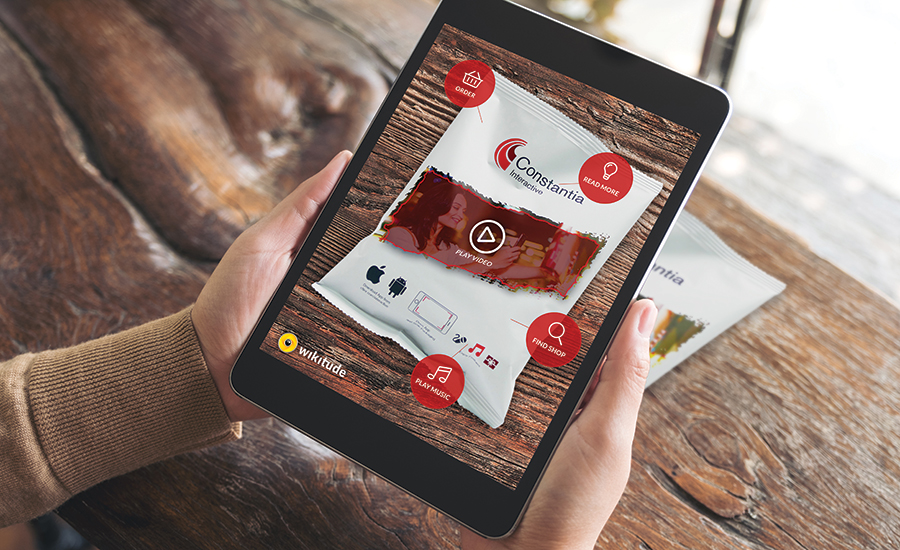
Thanks to the AR software from Salzburg, smartphones can easily recognize a variety of shapes and packaging. The aim of the partnership is to jointly expand the interactive packaging market.
Wikitude CEO Martin Herdina is confident these capabilities will change the world: “When customers unite product discovery with such apps on their everyday shopping, augmented reality will soon be the norm to every consumer.”
A survey by Constantia shows that 69 percent of consumers would rather choose a product for which they can call up useful additional information with their smartphone. What is really in the product? What else can I use it for? There is typically not enough space for extra information on most types of packaging.
AR is also seen on the plant floor in the shape of eyeglasses and sometimes called “assisted reality,” where users get a hands-free and heads-up work environment. Quite surely, the use of smart glasses will rise in the field.
Digital Printing
Digital printing is continuing to disrupt the packaging space. In fact, a Smithers Pira (smitherspira.com) report states that by 2022, the digital (inkjet and toner) packaging market will grow by almost 13 percent annually to exceed $22 billion. The largest growth will be seen on flexible, metal and carton materials.
Digital print for the packaging sector sort of started with Coca-Cola Corp. and its “Share a Coke With…” series of marketing campaigns. This brought the capability of digital printing into the mainstream for brands, designers and converters. The main campaign was a mass-customization versioning of PET bottle labels with specific names for printed on-demand cans and bottles.
Oreo cookies ran a campaign to color in the pack design and get the pack sent direct to the buyer.
Brands can use digital print to increase emotional engagement with consumers and potential customers to boost the brand status.
A recent Paperboard Packaging Competition Winner for Digital Application of the Year, Westrock’s (westrock.com) digital print campaign for Crown Royal Canadian whisky featured multiple rodeo-inspired images that wrap around the carton so shoppers could see the design from every angle.
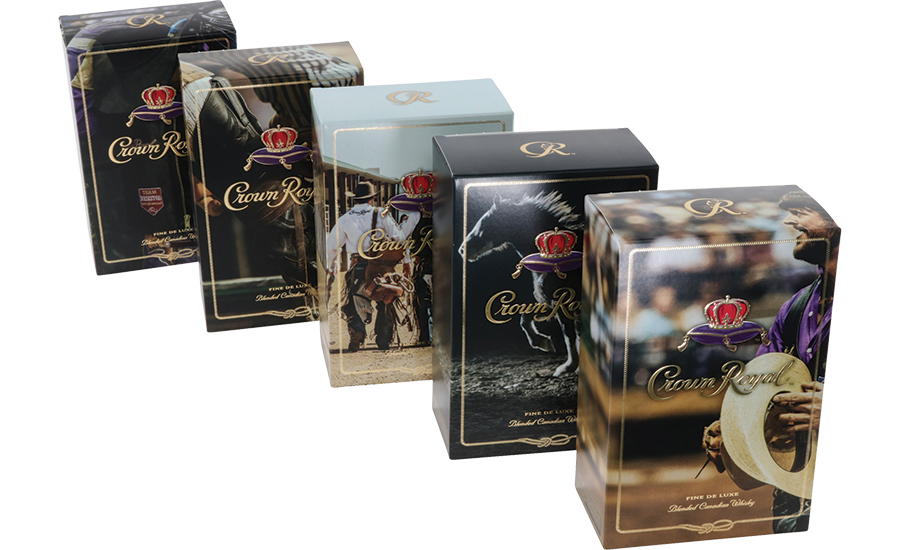
A new ink by HP (hp.com), Indigo ElectroInk Silver, delivers digitally printed metallic effects across a wide color gamut. The company states it is getting excellent results printing fine type and vignettes in silver and says it can produce virtually any metallic color by printing process colors over the silver.
Less Packaging, More Sustainability
We have seen the move to less packaging waste and more sustainable choices around the globe. Companies are improving their organizational practices that impact the natural environment as well. Consumer product goods companies, as well as retailers and suppliers, have committed to reduce packaging and/or make sure it is recyclable, compostable or reusable by 2025 or earlier.
Major brands like Mondelēz International, Coca-Cola, PepsiCo, Procter & Gamble, Nestlé, Unilever, Danone, General Mills, Kraft Heinz, Diageo and more are making the move toward a circular economy.
PMMI reports that 75 percent of beverage manufacturers are reducing packaging materials, thereby lessening their carbon footprint. Many are using PET bottles with 100 percent recycled resin — which offers the same clarity and barrier properties as 100 percent virgin PET.
Reducing greenhouse gas emissions in its supply chain is a goal for many as well. General Mills is making it a priority, along with sustainably sourcing 100 percent of its fiber packaging by 2020. Unilever plans to halve waste associated with the disposal of its products by 2020 along with lightweighting its packaging. Mondelēz actually reached 80 percent of its sustainability goals for 2020 last year.
Suppliers are also doing their part. Mondi will come out with a fully recyclable PE pouch this year, and Dow has hired a special team to tackle the global issue of plastics packaging recycling. Also, UPM Raflatac has come out with wash-off film labels with recycled liners.
While it may take year-on-year changes, the decisions made by these companies will be welcomed not only by today’s consumers but by future generations.
|
Market Trend Spotlight Given the nature of this article, we would be remiss not to mention two markets that have made quite a stir in the last year. Both pet food and cannabis have seen rapid growth — and both are in the jump seat to soar even still. Food for FidoPet food is one segment that just keeps evolving. People treat their pets as valued members of the family and, therefore, they must be treated with the best products. Nielsen (nielsen.com) reports that Americans spent nearly $33 billion on pet food and treats in the last year. Compared with one year ago (2017), that’s an increase of 5 percent, or $1.5 billion in sales. Alone, e-commerce sales of pet consumables increased 53 percent in 2018, yet rapid growth hasn’t stopped consumers from hitting big-box retailers for their pet food needs. Consumers still spent more than $16 billion on pet food at traditional retail outlets, up nearly 2 percent from a year ago, reveals Nielsen’s report. Given the choices across the market (local pet stores, big box retailers, veterinary clinics, online retailers), as well as the change across products and formats, it’s critical for pet food brands to keep an omnichannel perspective. Another big chunk of the market: subscription boxes. While BarkBox used to be the big player, there are several brands that have popped up: PupJoy, Pet Treater, Surprise My Pet, PoochPerks, Surprise Pawty, PupBox, Cat Lady Box and more. This is a great choice for pet owners. The pet food industry has also made strides toward a more sustainable future. Both Wellness Natural Pet Food and Mars Pet Care Division partner with TerraCycle. The program allows pet food packaging to be collected at participating retailers and other drop-off locations. The packaging is sorted, cleaned and shredded, and then turned into small plastic pellets that can be converted into useful plastic items.
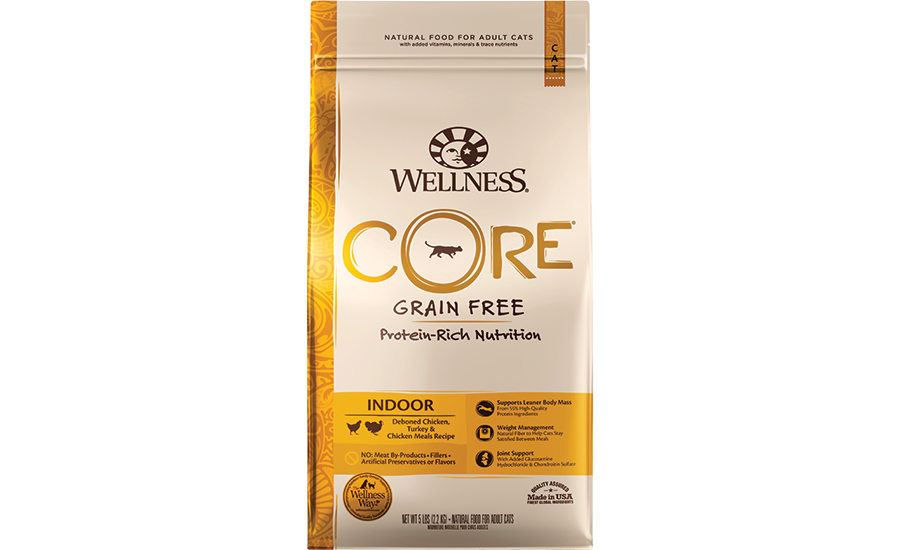
The Green MarketThe last year has seen an even greater explosion in cannabis packaging — brought on by the legalization of medical marijuana use as well as recreational. With 33 states in the U.S. legalizing marijuana for medicinal purposes and 10 states for recreational use, as well as Canada legalizing use, the packaging world has seen an uptick in child-resistant and resealable, tamper-evident and odor-proof packs. The U.S. cannabis industry is expected to reach $24.5 billion by the year 2020, with $11.2 billion for recreational products and $13.3 billion for medical products. While 95 percent of customers preferred cannabis flowers in 2016, only 55 percent preferred them last year — instead favoring concentrated, processed cannabis formats, according to a report by PMMI (The Association for Packaging and Processing Technologies). The need for cannabis-specific packaging has pushed designers to think of ways to be compliant without giving up creativity. The packaging is highly regulated, which has packagers on their toes. The product is now seen in the confectionery, beverage, pharmaceutical, personal care and food sectors — with flowers, edibles, topicals, concentrates, oils and drinks.
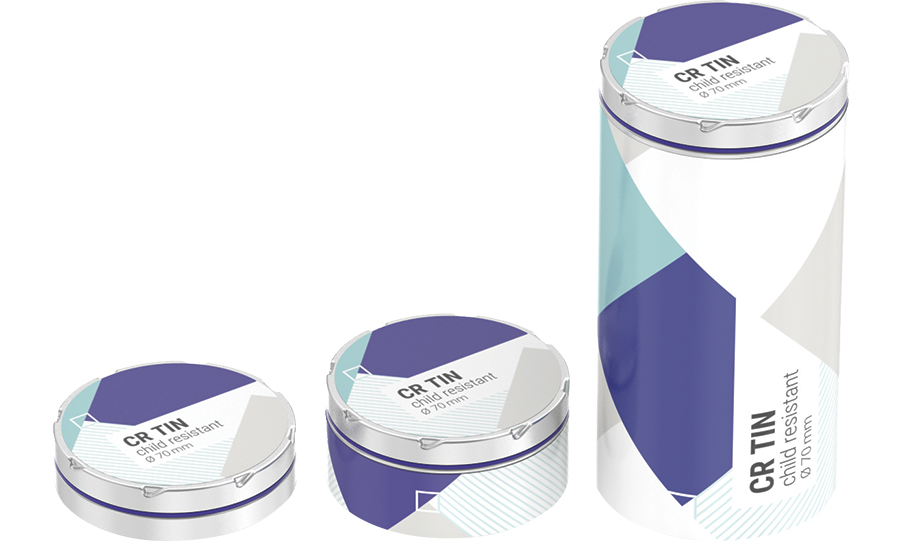
Hoffmann Neopac (hoffmann.ch) introduced recyclable, child-resistant opaque tins for cannabis products. The recyclable and reusable tins are designed for a variety of products, including edibles. This sector still has challenges ahead, such as FDA inspections, separate RFID tags for the plant and packaged product, differences between state and federal laws, and required features. Yet, the U.S. cannabis market has grown 200 percent in the last five years and will continue on this path. |

